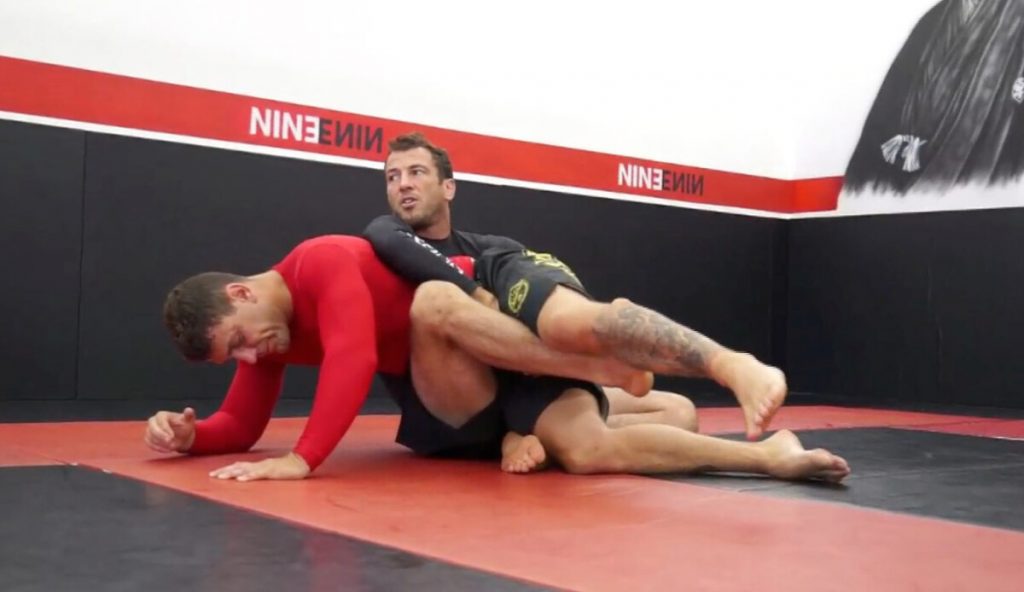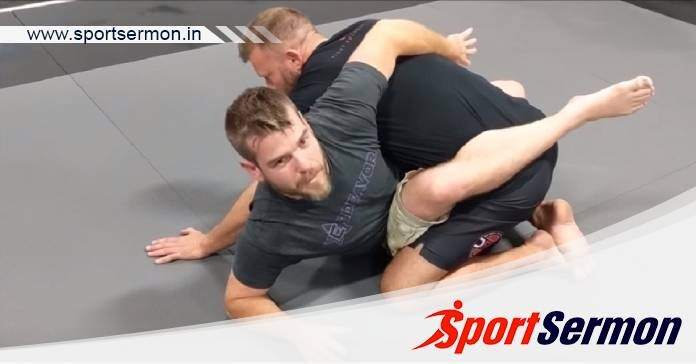Octopus Guard In BJJ: Many grapplers enjoy Brazilian Jiu-Jitsu’s guard-playing aspect. In terms of defence, the guard gives you the opportunity to land punches by sweeping the opponent, allowing you to assume a dominant position or end the fight with a number of submissions. BJJ offers a wide-open space for imagination. Nothing beats the fundamentals, but as you advance, utilising guard provides you more creative flexibility to play it and, to a certain extent, allows you to go beyond some of BJJ’s core rules. We’ll talk about the octopus guard today, a unique way to use the position in BJJ.
What Does the BJJ Octopus Guard Do?

Eduardo Telles, a BJJ world champion known for his unique grappling, invented the octopus guard. Telles is notorious for attacking with sweeps and submissions when in the turtle position, and on occasion, he would even let his opponents assume it. With his unconventional grappling method, Telles invented the octopus guard, which is particularly challenging to handle if you’re unaware of how the opponent could strike from the position.
Starting with the closed and half guard, the octopus guard is executed. The closed guard is typically utilised to sneak behind the opponent utilising moves like the arm drag and to fundamentally disrupt the opponent’s posture, and execute sweeps and submissions. After clearing the opponent’s hands and pulling them to one side, you utilise the octopus guard in the closed guard by getting beneath their shoulders in a sit-up stance and utilising your near hand to grip behind their far lat. The opponent’s back is exposed as a result of your arm wrapping behind them and making it tough for them to stand up.
The octopus guard is challenging to pass, even when the opponent on top would look to be going to pass and obtain the mount or side control. In addition to gaining the back mount, which is just one of your options, you can also attack with the calf slicer or a kimura because it is a common defensive response from the opponent to get an arm over your torso to avoid the octopus guard.
You might also be interested in reading this: The Top BJJ Passes Newcomers Need to Learn
Octopus Guard To Front Head
Playing the guard has the advantage that you may always use imagination. If the opponent retreats, you may just stand up, as Craig Jones advises. Your training partner will be more active if you are standing up since they will try to hold you down.
You may change your grip from your opponent’s far lat into a front headlock from the octopus guard in half guard and sit out as you stand up. You may take advantage of this opening to further force your adversary’s head downward and then launch an assault using a chin strap and chokes like the D’Arce, guillotine, and anaconda. Your inside legs aren’t as ensnared by the octopus protection coming from bottom-side control, making these assaults accessible.
Octopus Guard From Half Guard
The octopus guard, in particular the knee shield, is most frequently utilised in modern grappling from the half guard. From the shallow knee shield, where your knee doesn’t cross the opponent’s centre line, approach the opponent closely. An opponent’s typical response while in half guard is to cross-face your upper body. To avoid this, reduce the gap until you can pass the opponent’s arm over your head. Maintain your hand near your head as if you were doing a high guard in boxing.
By gripping the opponent’s far lat while your other hand posts on the mat, you may maintain the half guard and transition to the octopus guard. It’s important to put adequate weight on the opponent’s hands by gripping behind their armpit while maintaining your elbow tightly on their back. If the opponent adopts a hunched-over stance, you should lean back to maintain the weight of the octopus guard.
Octopus Guard from Closed Guard
The octopus guard is a flexible guard that grapplers of any stature may utilise effectively against any opponent. Before incorporating the octopus guard into your game if you are new to BJJ, you need to be comfortable with the foundational ideas of the closed guard.
The opponent’s stance is the initial setup from the closed guard. As it will be difficult to generate an angle and go to the side if they are in a chest-to-chest connection with you, your main objective should be to pull the opponent’s elbow towards their centre line. You may accomplish this by grabbing the opponent two-on-one, dragging their arms, or pulling them with your legs as you turn your head the other way. As you sit up, turn your body to the side and place your elbow on the mat. Reach for the opponent’s far lat after sitting up with your lat beneath their armpit. You should be on high alert now as a result.
To set up the two-on-one grip, drag the opponent’s left arm to your left to create an angle. Then, sweep them with the octopus guard while clutching their tricep with your right hand and left hand, respectively. When it happens, you’ll be able to grab their far lat with your left hand. Put your right elbow on the mat while sitting up and your left foot on the floor.
A fantastic guard where you may express your creativity whichever you like is the Octopus Guard. We promise that you will astound a lot of unprepared training partners if you practise the octopus guard to become familiar with the ins and outs of the posture.
Let us know your valuable reviews in the comment section below.

